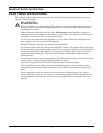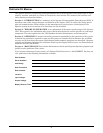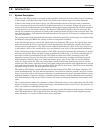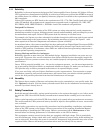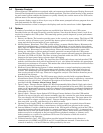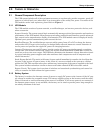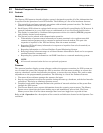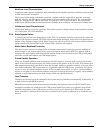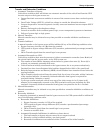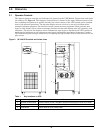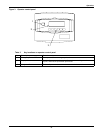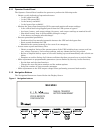
Theory of Operation
9
2.2 Detailed Component Descriptions
2.2.1 Controls
Hardware
The Npower UPS operator interface display system is designed to provide all of the information that
is required for the operation of each UPS module. The following is a list of the hardware features:
1. The control logic performs automatic operations with minimal operator interface. The limited
number of manual controls are easy-to-use.
2. Each Npower UPS cabinet is equipped with an easy-to-read liquid crystal display (LCD) screen. It
presents information in a way that is easy to understand at an eye-level front panel location.
3. The display is controlled by a dedicated microprocessor with a non-volatile (EPROM) program
and a battery-backed event memory.
4. The Npower can be ordered with communication ports for:
a. Transmission of present status information to remote terminals via a resident auto-dial
communications program and an external or optional internal modem. This port also
responds to inquiries of the UPS and history from the remote terminal.
b. Reporting UPS and history information in response to inquiries from a local terminal (no
modem required).
c. Reporting information to a Liebert SiteScan Central Monitoring System.
d. Relaying selected alarm messages to a Liebert Remote Alarm Status Panel and to a separate
terminal board for customer use.
e. Reporting key systems information via SNMP interface to a network monitoring system.
Firmware
The operator interface display system software enables the operator to monitor the UPS system sta-
tus, to control the power flow through the UPS, to monitor all of the meter readings, to execute the
start-up, shutdown, and the load transfer procedures, to access the event history files, and to make
adjustments to the programmable parameters. The following is a list of the firmware features:
1. The menu-driven software prompts the operator for input.
2. Step-by-step instructions assist the operator during the start-up, shutdown, and the load transfer
procedures. This helps to eliminate operator errors.
3. Graphics-based mimic diagrams illustrate the position of internal switches and the power flow
through the UPS system.
4. The Present Status screen reports information about the system's present status. The History
Status screen chronicles the events leading up to and immediately after a fault. The Event
History screen lists all of the alarm messages that have been logged over a period of time.
Refer to 3.0 - Operation for a description of the controls and indicators located on the Operator Con-
trol Panel.
NOTE
All external communication devices are optional equipment.



